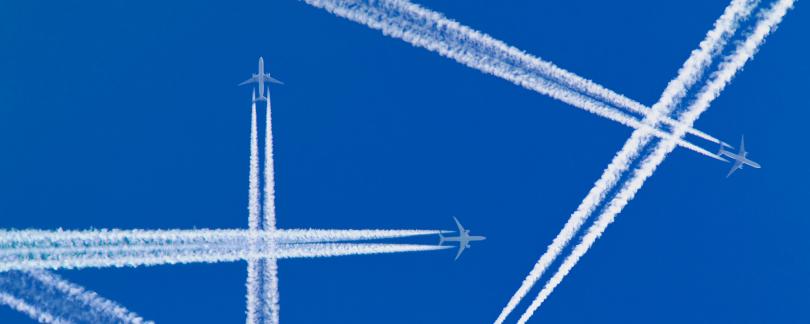The resumption of flights with Europe brings about noise
During the downtime in aviation caused by the pandemic, people got used to the “quiet” sky. As air traffic recovers, the volume of travel and flights and the associated noise have increased. The Air Navigation Services, managing the air traffic at Tallinn Airport and in Estonian airspace, explains what affects the noise level caused by aviation and how the flight paths and routes are formed above Tallinn.

Lennuliiklusteeninduse AS (Estonian Air Navigation Services) is responsible for organising air traffic in the Estonian airspace. Air traffic controllers determine the safest and most optimal flight directions for overflight aircraft, as well as for the aircraft landing and taking off here. “Airplanes always take off and land headwinds, because as such the take-off and landing procedures are the shortest and safest. The landing direction cannot be chosen to affect as few people as possible. The wind direction is determined by nature and air traffic controllers cannot influence this. In addition, care is taken to ensure that flights are not excessively delayed and that the impact of aviation on the environment is as small as possible,” says Üllar Salumäe, Member of the Management Board and Head of Air Traffic and Aeronautical Information Management at Lennuliiklusteeninduse AS. The planes take off and land from the direction of Lake Ülemiste and Lagedi to a more or less equal extent, so the noise is distributed almost equally in both directions.
The descending and ascending course assigned to aircraft can be adjusted up to certain limits to reduce the impact of noise, and this can be done when noise measurements indicate that the standards have been exceeded. Only airplanes for which the Transport Administration has issued a noise certificate confirming that the aircraft complies with the environmental performance standards and requirements established by the European Union Aviation Safety Agency (EASA) may operate. Noise level is high during overflight, but air traffic is lighter and average noise level is within the limits.
Compared to other European capitals, the specificity of Tallinn is that the airport is located in the city centre – it is a convenient location for both, arriving and departing passengers. This, however, means that the airplanes inevitably have to approach the airport across the city and residential areas. “The flight schedule depends mainly on the airlines and the largest hubs of Europe. From the passengers’ point of view, it is important that they can choose to start the trip either in the morning or at lunch and also return to Estonia in the evening. Therefore, the flight schedule is distributed in waves throughout the day,” says Anneli Turkin, Member of the Management Board at AS Tallinna Lennujaam.
Tallinn Airport has established a noise monitoring system: two stationary stations and one mobile noise monitoring terminal. Stationary stations are located at both ends of the runway – one in the territory of AS Tallinna Vesi and the other in the territory of Tallinn Airport.
It is not allowed to fly below 300 meters above the city of Tallinn, except for the take-off and landing of the aircraft, in order to save nature and the living environment. An aircraft may fly lower with a single permit under the conditions set out in the Aviation Act.
This March, it was possible to fly to 10 destinations from the airport. Today, we have connections with 25 direct destinations. There are also a number of charter flights.” People got used to the small number of flights and lack of noise; however, during the peak travel season, aircraft noise is a nuisance. There are still three times less flights departing from and arriving at the airport than compared to 2019,” Turkin adds. Thus, it is inevitable that a good air connection also involves noise caused by the airplanes.